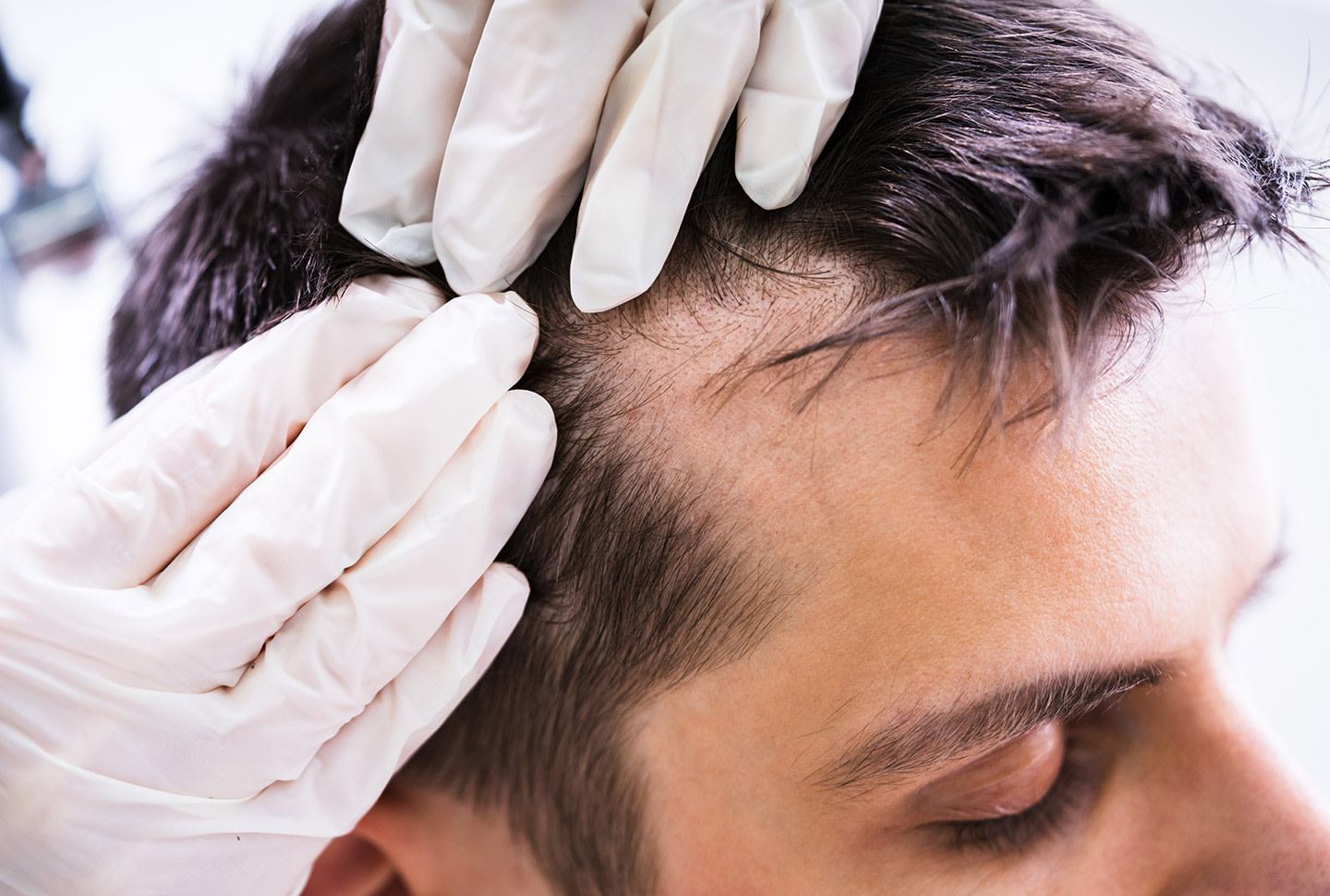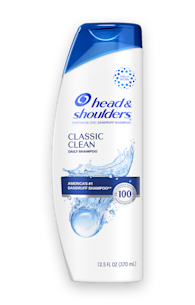SIXTY YEARS OF SCALP SCIENCE

Procter & Gamble’s Sixty Years of Scalp Science
Summary: This provides a review of Procter & Gamble’s publications in peer-reviewed scientific journals related to the science of the scalp, the dandruff condition, and dandruff treatment.
Our scientific asset portfolio demonstrates our commitment to advancing the science of scalp care. It covers topics ranging from the development of a new active to treat dandruff and its characterization, the cause of dandruff from both host and fungal perspectives, the development of new measures to assess scalp health, demonstration of product efficacy and formulation technology.
Notable Procter & Gamble milestones:
1. Discovered what causes dandruff – a normal scalp yeast; mapped its complete genomic information
2. Discovered what would become the world’s leading material for treating dandruff, which targets this causative scalp yeast
3. Discovered how the yeast interacts with the scalp to cause dandruff in susceptible individuals
4. Discovered how to retain the material on the scalp while washing to treat and protect
5. Discovered how to get the active efficiently spread all the places on the scalp that it is needed by using a unique form of it
6. Discovered how to turbo-boost the activity of the scalp active
7. Discovered that impaired scalp health is much more than flakes, including itch and even compromised hair quality and retention
Publications:
Zinc Pyrithione: formulation/delivery advantages, safety, clinical efficacy, and physical chemistry. Role of sebaceous lipids in dandruff causation.
1. Parran, J., Deposition on the skin of particles of antimicrobial agents from detergent bases. J. Invest. Dermatol., 1965. 45: p. 86-88.
2. Snyder, F., Development of a therapeutic shampoo. Cutis, 1969. 5: p. 835-838.
3. Parran, J. and R. Brinkman, The effect of human skin surface lipids upon the activity of antimicrobial agents. J. Invest. Dermatol., 1965. 45: p. 89-92.
4. Snyder, F., E. Buehler, and C. Winek, Safety evaluation of zinc 2-pyridinethiol 1-oxide in a shampoo formulation. Toxicol. Appl. Pharmacol., 1965. 7: p. 425-437.
5. Orentreich, N., E. Taylor, R. Berger, and R. Auerbach, Comparative study of two antidandruff preparations. J. Pharm. Sci., 1969. 58: p. 1279-1280.
6. Barnett, B., H. Kretschmar, and F. Hartman, Structural characterization of bis(N-oxopyridine-thionato)zinc(II). Inorg. Chem., 1977. 16: p. 1834-1838.
7. Seymour, M. and D. Bailey, Thin-layer chromatography of pyrithiones. J. Chromatog., 1981. 206: p. 301-310.
8. Troller, J., Model system for the investigation of dandruff. J. Soc. Cosmet. Chem., 1971. 22: p. 187-198.
9. Billhimer, W., P. Bryant, K. Murray, T. Coffindaffer, et al., Results of clinical trial comparing 1% pyrithione zinc and 2% ketoconazole shampoos. Cosm. Derm., 1996. 9: p. 34-39.
10. Neumann, P., T. Coffindaffer, P. Cothran, J. Jones, et al., Clinical investigation comparing 1% selenium sulfide and 2% ketoconazole shampoos for dandruff control. Cosm. Derm., 1996. 9: p. 20-26.
Etiological understanding of the skin physiology associated with dandruff, and skin benefits of product usage that resulted in the flake/itch/dryness symptom improvements. Demonstrated that fundamental unhealthy epidermal skin structure is associated with dandruff. Observed that ZPT-based products deliver anti-irritancy benefits, and that zinc in general is quite beneficial to the skin. Demonstrated the specific molecular triggering of the dandruff condition by oleic acid.
11. Warner, R., J. Schwartz, Y. Boissy, and J.T. Dawson, Dandruff has an altered stratum corneum ultrastructure that is improved with zinc pyrithione shampoo. J. Amer. Acad. Dermatol., 2001. 45: p. 897-903.
12. Warren, R., J. Schwartz, L. Sanders, and P. Juneja, Attenuation of surfactant-induced interleukin 1a expression by zinc pyrithione. Exog. Dermatol., 2003. 2: p. 23-27.
13. Schwartz, J., Cosmeceutical Metals, in Cosmeceuticals, Z. Draelos, Editor. 2005, Elsevier: New York. p. 89-95.
14. Schwartz, J., R. Marsh, and Z. Draelos, Zinc and skin health: Overview of physiology and pharmacology. Dermatol. Surg., 2005. 31: p. 837-847.
15. Schwartz, J. and K. Mills, Cosmeceutical Metals, in Cosmeceuticals, Second Edition, Z. Draelos, J. Dover, and M. Alam, Editors. 2009, Elsevier: New York. p. 87-95.
16. DeAngelis, Y., C. Gemmer, J. Kaczvinsky, D. Kenneally, et al., Three etiologic facets of dandruff and seborrheic dermatitis: Malassezia fungi, sebaceous lipids, and individual sensitivity. J. Invest. Dermatol. Symp. Proc., 2005. 10: p. 295-297.
Expanded understanding of the skin physiology associated with dandruff into molecular “biomarker” measures. Initiated a rapid, simple non-invasive approach to obtain samples, developed a series of biomarkers that differentiated dandruff and non-dandruff conditions, and demonstrated treatment-related effects, including the novel histamine measure. This enabled a new definition of “scalp health.”
17. Perkins, M., C. Cardin, M. Osterhues, and M. Robinson, A non-invasive tape absorption method for recovery of inflammatory mediators to differentiate normal from compromised scalp conditions. Skin Res. Technol., 2002. 8: p. 187-193.
18. Kerr, K., T. Darcy, J. Henry, H. Mizoguchi, et al., A description of epidermal changes associated with symptomatic resolution of dandruff: Biomarkers of scalp health. Intl J Derm, 2011. 50: p. 102-113.
19. Kerr, K., J. Schwartz, T. Filloon, A. Fieno, et al., Scalp stratum corneum histamine levels: Novel sampling method reveals correlation to itch resolution in dandruff/seborrheic dermatitis. Acta Derm. Venereol., 2011. 91: p. 404-408.
20. Schwartz, J., A. Messenger, A. Tosti, G. Todd, et al., A comprehensive pathophysiology of dandruff and seborrheic dermatitis – towards a more precise definition of scalp health. Acta Derm Venereol, 2013. 93: p. 131-137.
Malassezia understanding. Development of DNA-based methodology that led to identifying M. globosa as the specific causative organism associated with dandruff, the understanding of lipase activity behind its pathogenic activity and, finally, the description of the complete genomic sequence of the causative organism.
21. Gemmer, C., Y. DeAngelis, B. Theelen, T. Boekhout, et al., Fast, noninvasive method for molecular detection and differentiation of Malassezia yeast species on human skin and application of the method to dandruff microbiology. J. Clin. Microbiol., 2002. 40: p. 3350-3357.
22. Gupta, A., R. Batra, R. Bluhm, T. Boekhout, et al., Skin diseases associated with Malassezia species. J. Amer. Acad. Dermatol., 2004. 51: p. 785-798.
23. Hay, R. and R. Graham-Brown, Dandruff and seborrhoeic dermatitis: causes and management. Clin. Exp. Dermatol., 1997. 22: p. 3-6.
24. Ro, B. and T. Dawson Jr., The role of sebaceous gland activity and scalp microfloral metabolism in the etiology of seborrheic dermatitis and dandruff. J. Invest. Dermatol. Symp. Proc., 2005. 10: p. 194-197.
25. DeAngelis, Y., C. Saunders, K. Johnstone, N. Reeder, et al., Isolation and expression of a Malassezia globosa lipase gene, LIP1. J Invest Dermatol, 2007. 127: p. 2138-2146.
26. Xu, J., C.W. Saunders, P. Hu, R.A. Grant, et al., Dandruff-associated Malassezia genomes reveal convergent and divergent virulence traits shared with plant and human fungal pathogens. Proc Natl Acad Sci, 2007. 104: p. 18730-18735.
27. Saunders, C., A. Scheynius, and J. Heitman, Malassezia Fungi Are Specialized to Live on Skin and Associated with Dandruff, Eczema, and Other Skin Diseases. PLoS Pathog, 2012. 8: p. e1002701.
Evolved understanding of how Zinc Pyrithione (ZPT) works to treat dandruff, and the important factors associated with effective delivery to the scalp. Illustrated the importance of particle size and surface coverage, and later expanded to include the importance of infundibular delivery. Described a mechanism to potentiate the anti-fungal activity of ZPT. Discovered how ZPT works on a molecular level.
28. Schwartz, J., C. Cardin, and T. Dawson Jr., Dandruff and seborrheic dermatitis, in Textbook of Cosmetic Dermatology, 3rd Ed., R. Baran and H. Maibach, Editors. 2005, Taylor & Francis: New York. p. 259-272.
29. Schwartz, J., Product pharmacology and medical actives in achieving therapeutic benefits. J. Invest. Dermatol. Symp. Proc., 2005. 10: p. 198-200.
30. Schwartz, J., R. Shah, H. Krigbaum, J. Sacha, et al., New insights on dandruff/seborrhoeic dermatitis: the role of the scalp follicular infundibulum in effective treatment strategies. Brit J Derm, 2011. 165 Suppl 2: p. 18-23.
31. Reeder, N., J. Kaplan, J. Xu, R. Youngquist, et al., Zinc pyrithione inhibits yeast growth through copper influx and inactivation of iron-sulfur proteins. Antimic Agents Chemother, 2011. 55: p. 5753-5760.
32. Reeder, N., J. Xu, R. Youngquist, J. Schwartz, et al., The antifungal mechanism of action of zinc pyrithione. Brit J Derm, 2011. 165 Suppl 2: p. 9-12.
Advanced the understanding of other aspects of dandruff and treatment, including impact on hair quality: Demonstrated that ZPT dandruff products work continually, and debunked the physiological accommodation myth (no tachyphylaxis). Through both epidemiology and treatment studies, demonstrated that scalp health affects the quality and retention of hair. Demonstrated that a Procter & Gamble potentiated 1.0% ZPT shampoo, optimized for active delivery and retention, remains superior to a global competitor’s 1.0% ZPT shampoo. Demonstrated that compliance, driven by desirable cosmetics, is the key to successful dandruff treatment long term.
33. Schwartz, J., H. Rocchetta, P. Asawononda, F. Luo, et al., Does tachyphylaxis occur in long-term management of scalp seborrheic dermatitis with pyrithione zinc-based treatments? Intl J Derm, 2009. 48: p. 79-85.
34. Sinclair, R., J. Schwartz, H. Rocchetta, T. Dawson Jr., et al., Dandruff and seborrheic dermatitis adversely affect hair quality. Eur J Derm, 2009. 19(4): p. 410-411.
35. Berger, R., J. Fu, K. Smiles, C. Turner, et al., The effects of minoxidil, 1% pyrithione zinc and a combination of both on hair density: a randomized controlled trial. Brit. J. Dermatol., 2003. 149: p. 354-362.
36. Schwartz, J., R. Bacon, R. Shah, H. Mizoguchi, et al., Therapeutic efficacy of anti-dandruff shampoos: A randomized clinical trial comparing products based on potentiated zinc pyrithione and zinc pyrithione/climbazole. Intl J Cosm Sci, 2013. 35: p. 381-387.
37. Draelos, Z., D. Kenneally, L. Hodges, W. Billhimer, et al., A comparison of hair quality and cosmetic acceptance following the use of two anti-dandruff shampoos. J. Invest. Dermatol. Symp. Proc., 2005. 10: p. 201-204.

